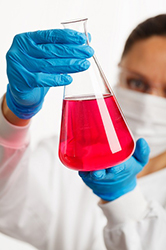 In our modern world, just about everyone comes in contact with solvents on a daily basis. At work, you might be exposed to solvents when you come in contact with glues, paints, thinners, degreasers, or cleaners. As a result of this widespread contact, it is important to understand the hazards that are associated with these chemicals. For practical purposes, a solvent is simply any chemical capable of dissolving specific solids or liquids. Petroleum based solvents are the most common type used in industry.
In our modern world, just about everyone comes in contact with solvents on a daily basis. At work, you might be exposed to solvents when you come in contact with glues, paints, thinners, degreasers, or cleaners. As a result of this widespread contact, it is important to understand the hazards that are associated with these chemicals. For practical purposes, a solvent is simply any chemical capable of dissolving specific solids or liquids. Petroleum based solvents are the most common type used in industry.
Exposure and overexposure to a solvent can occur in various situations. Preventing such exposures is key to protecting yourself from the damaging effects that certain chemicals can have on your body.
Examples include:
Absorption by direct contact on the skin. Wearing the right type of gloves and other protective gear is one way of preventing skin contact with the solvents you are using.
Inhalation by breathing vapors. Breathing in the vapors can quickly result in the chemical entering your body and bloodstream via your lungs. Utilizing the proper respirator can protect your lungs from toxic vapors.
Ingestion of the solvent due to not washing your hands after usage. Direct contact with your hands and mouth through eating or smoking may result in unexpected ingestion of solvents. Making sure you follow proper hygiene rules when handling solvents will help prevent ingestion.
Puncture of the skin by a tool or other object that is covered with solvent. Punctures can result in the introduction of toxic chemicals directly into your bloodstream. Making sure you wear proper safety equipment will aid in preventing injuries of this type.
Overexposure to solvents can cause a variety of ailments. Depending on the type of solvent you are exposed to, the body can react in different ways. Skin contact can result in minor skin rashes or an allergic reaction resulting in “chloracne.” This happens when the solvent dissolves the skin’s natural oils. Some workers can develop a sensitization to a particular product or chemical which causes their entire body to be overly sensitive to that substance. In this instance, even a slight exposure can result in adverse or serious reactions. Serious overexposures can lead to illnesses resulting in tissue or organ damage.
As with any chemical or product, important information is contained in the product’s Material Safety Data Sheet (MSDS). The MSDS provides information on safe use, handling, disposal and protection methods among other information.
Solvents serve a useful purpose in our everyday lives. If we take the time to learn more about them, we can be better prepared to use them correctly, protect ourselves, and still get our job done effectively. If you are unsure of the potential hazards of a solvent or other chemical that you are using, be sure to ask questions and/or review the MSDS. It is far better to be overly cautious, than to risk an adverse reaction.





